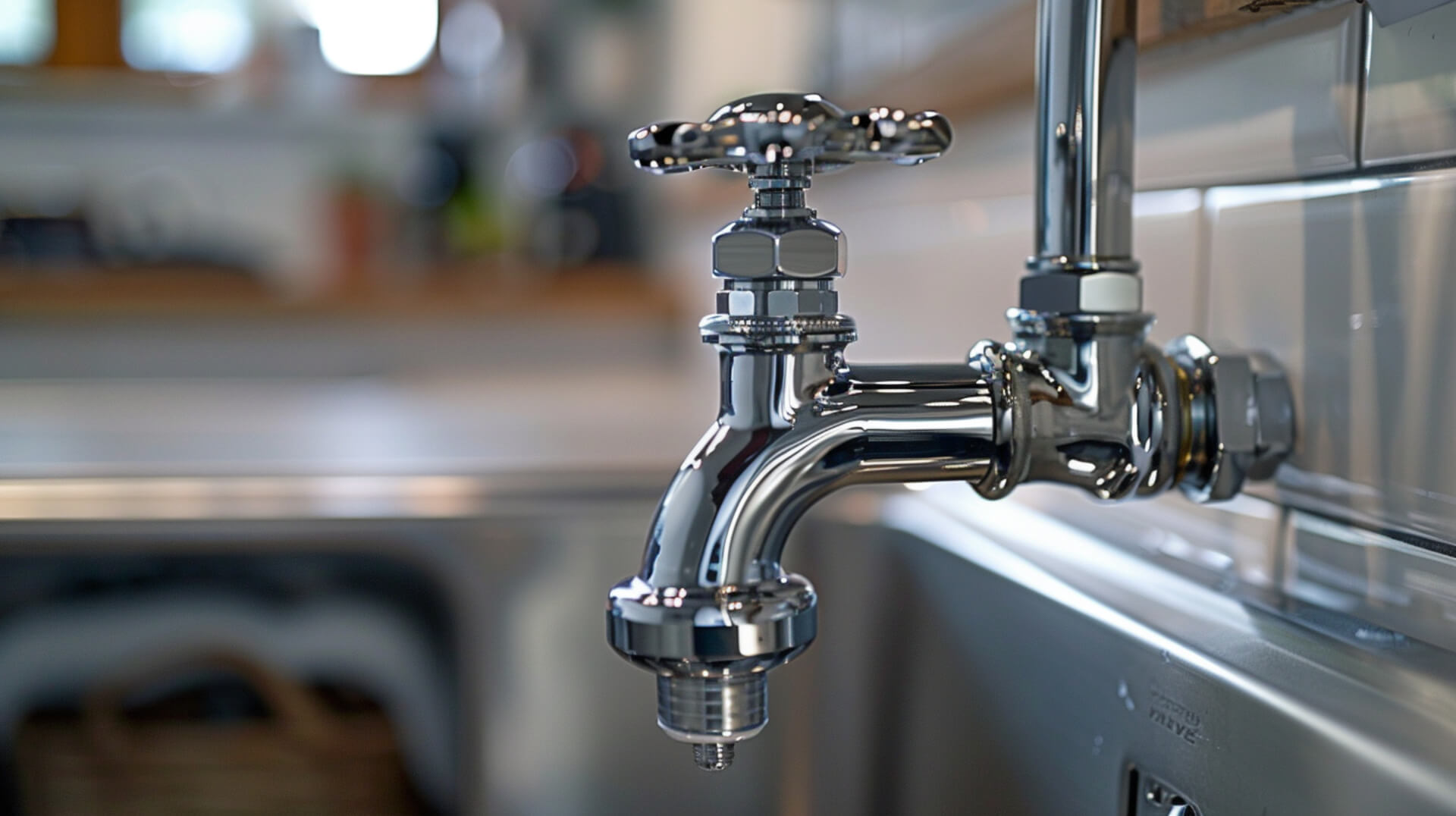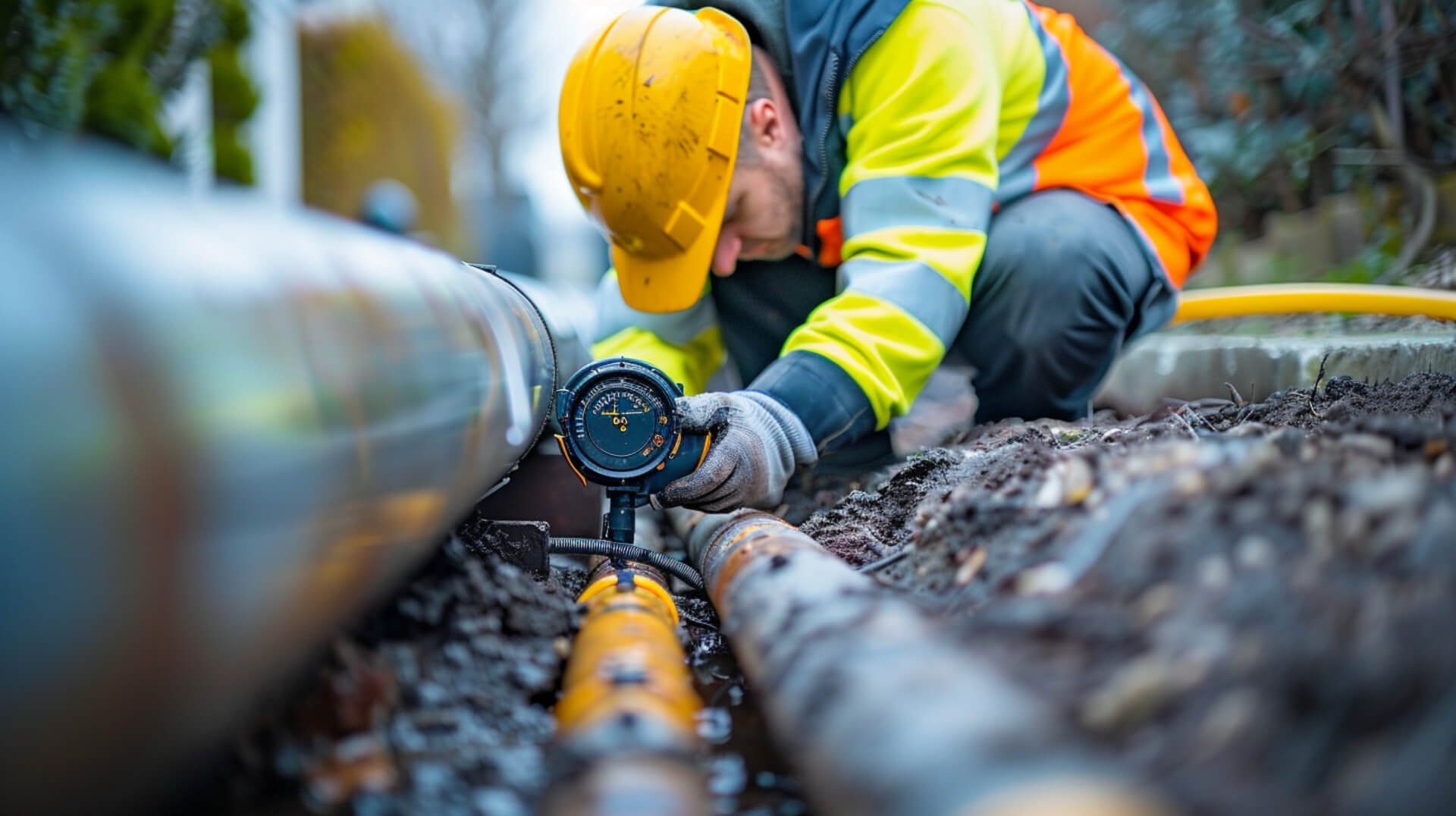 What Are The Benefits Of Drain Trenching Services
What Are The Benefits Of Drain Trenching Services
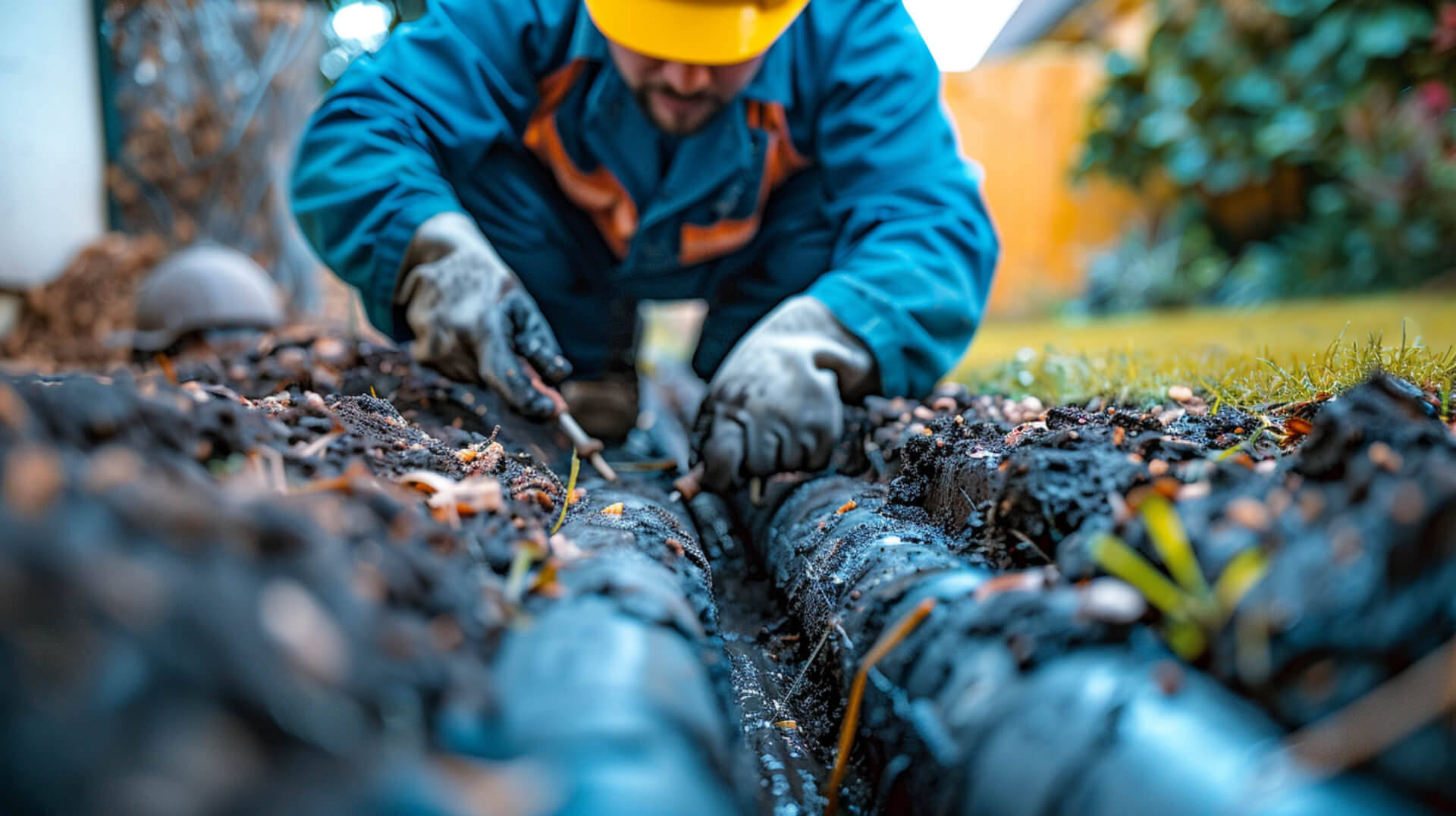
Drain trenching services are specialised procedures designed to manage surface water and prevent water damage to properties. These services involve the installation of trench drains, which are linear and serve as channels to quickly divert water away from structures, landscapes, and paved areas.
Functionality of Trench Drains
Trench drains function by capturing and redirecting surface water through a linear channel. This channel, typically made of durable materials like concrete or polymer, is covered by a grate that allows water to enter while filtering out debris. The trench body guides the water to a designated drainage area, preventing accumulation that could lead to flooding or structural damage.
Critical Role in Property Management
For property owners, trench drains are a critical component of property management. They safeguard against water-related issues that can compromise the foundation and integrity of buildings and paved surfaces. By managing water flow, these systems reduce the risk of erosion, property damage, and potential liability from slip-and-fall accidents due to standing water.
Optimal Timing for Implementation
Implementing drain trenching is advisable when constructing new buildings, renovating existing structures, or when drainage issues become apparent. Early integration of trench drains can prevent costly damage and ensure that water management is an integral part of the property’s design.
Contribution to Property Longevity
Drain trenching services contribute significantly to property longevity by providing a robust and reliable solution for water management. Properly installed and maintained trench drains prevent water from compromising structural elements, thereby extending the lifespan of the property and maintaining its value over time.
Understanding the Components of Trench Drains
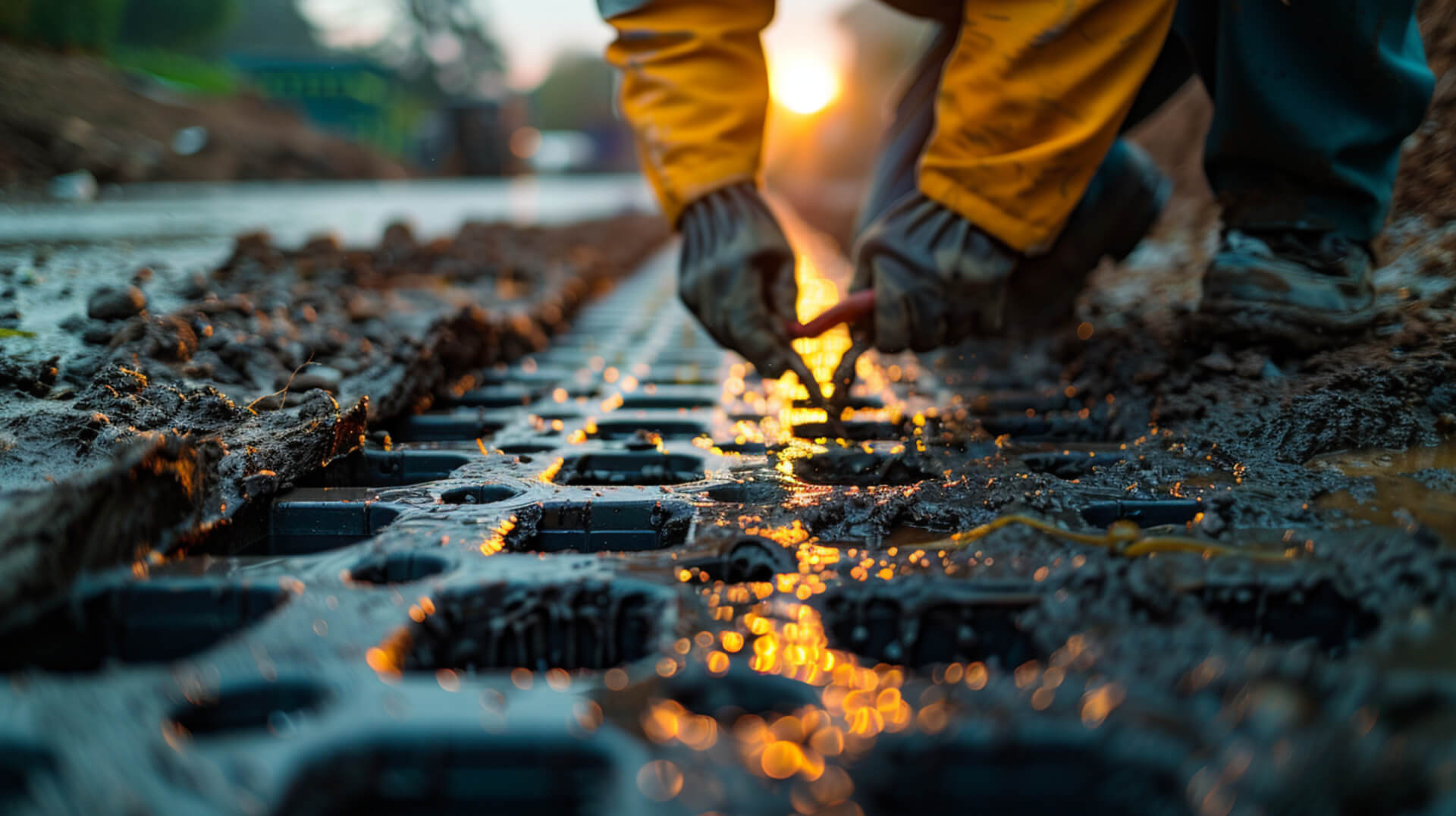
Trench drains, integral to effective water management systems, consist of two primary components: the trench body and the grates. These elements work in tandem to facilitate the swift diversion of water, thereby protecting property foundations and landscapes from potential water damage.
Trench Body and Grates: Ensuring Functionality and Aesthetics
The trench body, typically made of durable materials like polymer concrete or fibreglass, forms the main channel that captures and directs water away from critical areas. The choice of material is pivotal, as it must withstand constant exposure to water and varying loads, from pedestrian traffic to heavy vehicles.
Grates, serving as the cover for the trench body, not only prevent debris from entering the drainage system but also contribute to the overall aesthetic appeal of the property. These grates come in various designs, from minimalist to ornate patterns, allowing for a seamless integration into different architectural styles.
Importance of Material Selection
Selecting the appropriate materials for trench drains is essential for long-term functionality and minimal maintenance. Materials are chosen based on their resistance to corrosion, load-bearing capacity, and compatibility with the surrounding environment.
Customizable Options for Trench Drains
For those seeking tailored solutions, customizable options for trench bodies and grates are available. Suppliers offer a range of materials and designs to match specific aesthetic preferences and functional requirements, ensuring that the drainage system complements the property’s design while maintaining its primary purpose of effective water management.
The Fundamental Benefits of Implementing Trench Drains

Trench drains offer a multitude of benefits, from safeguarding the foundation of a property to enhancing its aesthetic appeal. Understanding these advantages can help property owners make informed decisions about water management solutions.
Foundation Protection Through Effective Water Management
Trench drains are designed to capture and redirect surface water, which is crucial in protecting the foundation of buildings. By preventing water accumulation around structural bases, these drainage systems mitigate the risk of water damage and associated foundation issues.
Safety Enhancement on Properties
The presence of trench drains significantly reduces the risk of water-related accidents. By eliminating standing water, these systems minimise slip hazards, making areas safer for pedestrians and vehicles alike. The grates covering the trenches also play a role in preventing debris from obstructing the flow of water, further contributing to a safer environment.
Versatility Across Various Slopes and Landscapes
Trench drains are engineered to be effective across diverse topographies. Whether installed on flat surfaces or sloped landscapes, they provide efficient water management, making them a versatile option for different property layouts.
Contribution to Aesthetic Value
Beyond functionality, trench drains can be customised with decorative grates that enhance the visual appeal of a property. These grates come in various styles, allowing property owners to choose designs that complement their landscape or architectural aesthetics.
Comparative Analysis: Trench Drains vs. French Drains

When considering drainage solutions, property owners often evaluate the merits of trench drains against French drains. Both systems serve the essential function of water management but differ significantly in their design and application.
Distinctive Features in Water Management
Trench drains are surface-level channels covered with grates, designed for rapid water collection and diversion. They are particularly effective in areas where immediate water removal is necessary to prevent flooding or water damage. French drains, on the other hand, are subsurface systems that collect groundwater and redirect it away from the property, offering a more gradual approach to water management.
Impact on Property Protection
The choice between trench and French drains can influence the level of property protection:
- Trench Drains: Provide immediate relief from surface water, making them suitable for areas prone to heavy rain or runoff.
- French Drains: Are better suited for managing water infiltration and protecting foundations over time.
Decision Factors for Property Owners
Property owners may prefer trench drains over French drains for several reasons:
- Immediate Water Diversion: Trench drains offer a quick solution to surface water problems.
- Visibility and Accessibility: The surface nature of trench drains allows for easier inspection and maintenance.
- Aesthetic Integration: Trench drains can be customised with decorative grates to enhance property appearance.
Situations Favouring Trench Drains
Trench drains are often the go-to choice in environments where water needs to be managed quickly and efficiently, such as:
- Driveways and parking lots where standing water can pose a hazard.
- Industrial settings where spill containment is critical.
- Urban landscapes where effective stormwater management is essential.
Maintenance and Upkeep of Trench Drains
Proper maintenance is crucial for the longevity and functionality of trench drains. Regular upkeep prevents blockages and ensures that the system operates efficiently.
Essential Maintenance Tasks
For trench drains to function optimally, routine tasks such as inspection and cleaning are necessary. Property owners should ensure that debris is regularly removed from the grates to prevent clogging. Additionally, checking for sediment buildup within the trench body is important to maintain proper water flow.
Preventing Clogs and Extending Lifespan
To avoid clogs, property owners are advised to schedule regular cleaning. This involves removing the grates and clearing any accumulated debris or sediment. Such preventative measures can significantly extend the lifespan of the drainage system.
Benefits of Professional Inspection
Professional inspections can identify potential issues that may not be immediately apparent to property owners. Experts can offer advice on repairs or adjustments to improve the system’s performance, ensuring that it continues to protect the property effectively.
Optimal Timing for Maintenance
Maintenance should be scheduled based on the frequency and volume of water handled by the trench drains. In areas with high rainfall or heavy usage, more frequent maintenance may be required. It is recommended to perform checks before the rainy season to ensure the system is prepared for increased water flow.
Customization and Aesthetic Options for Trench Drains
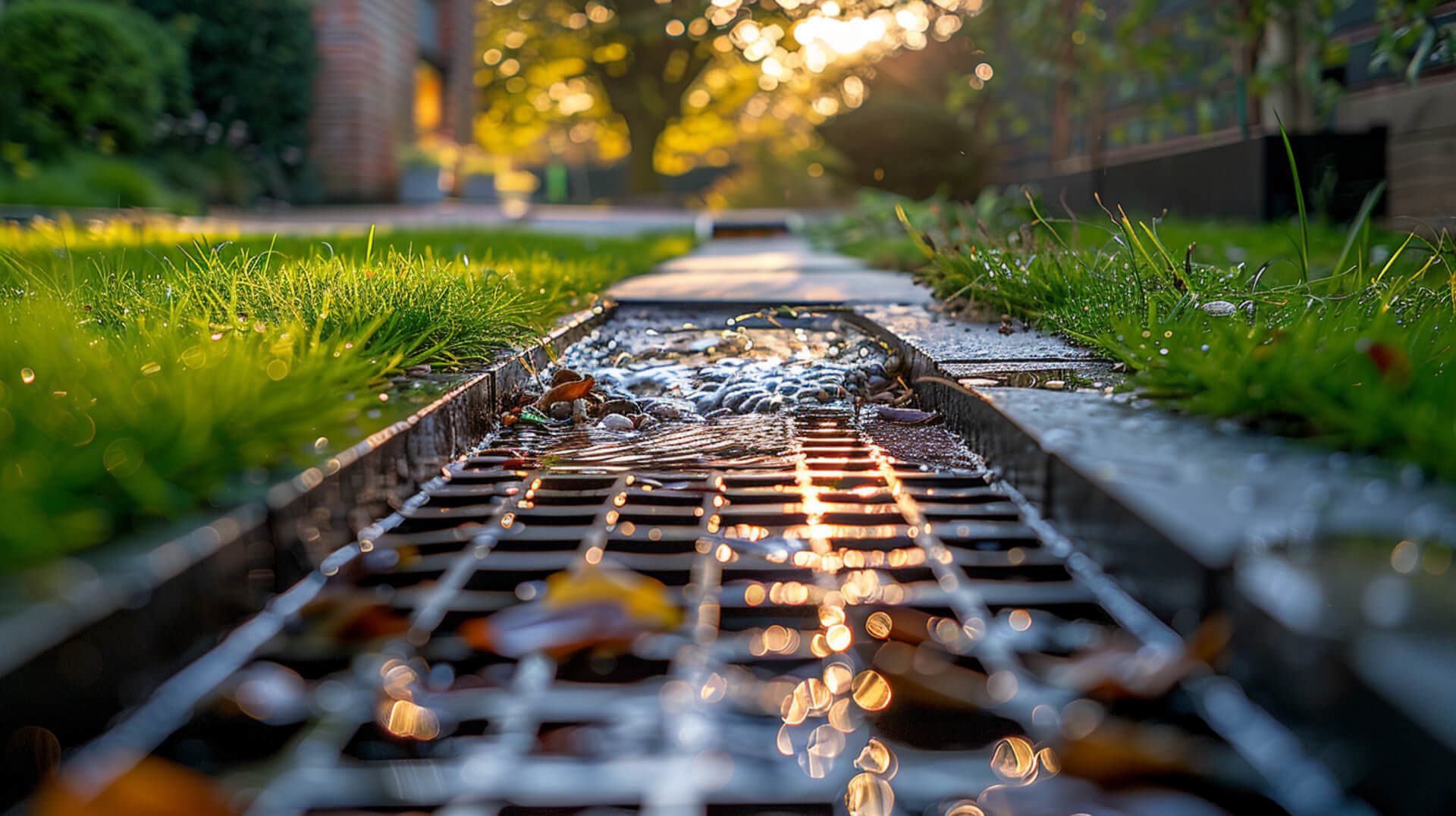
Trench drains, while primarily functional, also offer a range of customization and aesthetic options to complement property design.
Tailoring Trench Drains to Property Aesthetics
Property owners have the flexibility to customise trench drains to align with their property’s aesthetics. This customization can include selecting specific materials and designs for the trench body and grates that not only meet functional requirements but also enhance the visual appeal of the landscape.
Decorative Grate Varieties
A variety of decorative grate options are available, allowing for the integration of style without compromising the efficiency of the drainage system. These grates come in multiple patterns and materials, offering choices from subtle, minimalist designs to more elaborate, artistic motifs.
Balancing Form and Function
Considering aesthetics in drainage solutions contributes to the overall harmony of the property’s design. Decorative grates serve a dual purpose: they are an essential component of the drainage system and an opportunity to accentuate the property’s architectural features.
Sources of Inspiration for Decorative Options
For inspiration, property owners can consult with architects, landscape designers, or browse supplier catalogues to explore the range of available designs. Many suppliers also provide custom design services, allowing for a unique solution that reflects the property owner’s personal style and the character of the property.
Integration of Trench Drains in Sustainable Drainage Systems
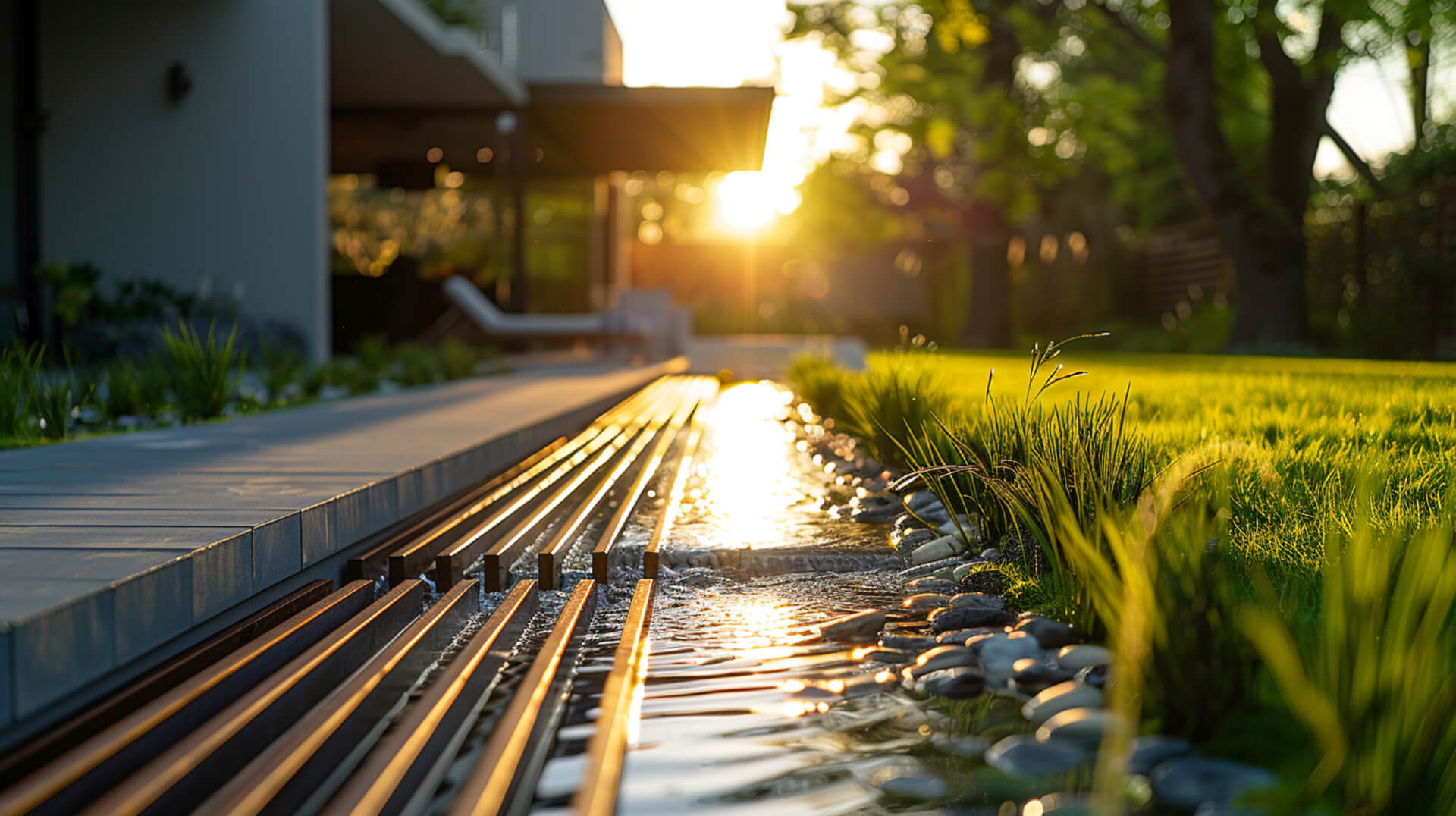
Trench drains play a pivotal role in Sustainable Drainage Systems (SuDS), contributing to modern urban planning and environmental management.
Trench Drains as a Component of SuDS
SuDS are designed to manage rainfall in a sustainable way, mimicking natural processes to reduce surface water runoff and improve water quality. Trench drains are a key element in these systems, capturing water at the surface before it can cause flooding or pollution.
Significance of SuDS in Urban Environments
In urban areas, where impermeable surfaces are prevalent, SuDS are essential for mitigating the impact of heavy rainfall. They help to manage water flow, reduce the burden on sewer systems, and lower the risk of flooding.
Environmental Benefits of SuDS
SuDS, including trench drains, offer several environmental advantages:
- Reduced Runoff: They slow down water flow, reducing the likelihood of flooding.
- Improved Water Quality: By filtering water through the system, pollutants are removed, leading to cleaner water entering natural watercourses.
- Enhanced Biodiversity: SuDS can create habitats for wildlife, increasing urban biodiversity.
Examples of Successful SuDS Implementations
Cities around the world have successfully integrated trench drains into their SuDS, demonstrating their effectiveness in areas like London’s Queen Elizabeth Olympic Park and the sustainable urban developments in Singapore. These examples showcase how trench drains can be both functional and environmentally beneficial.
Addressing Urbanisation Challenges Through Effective Drainage
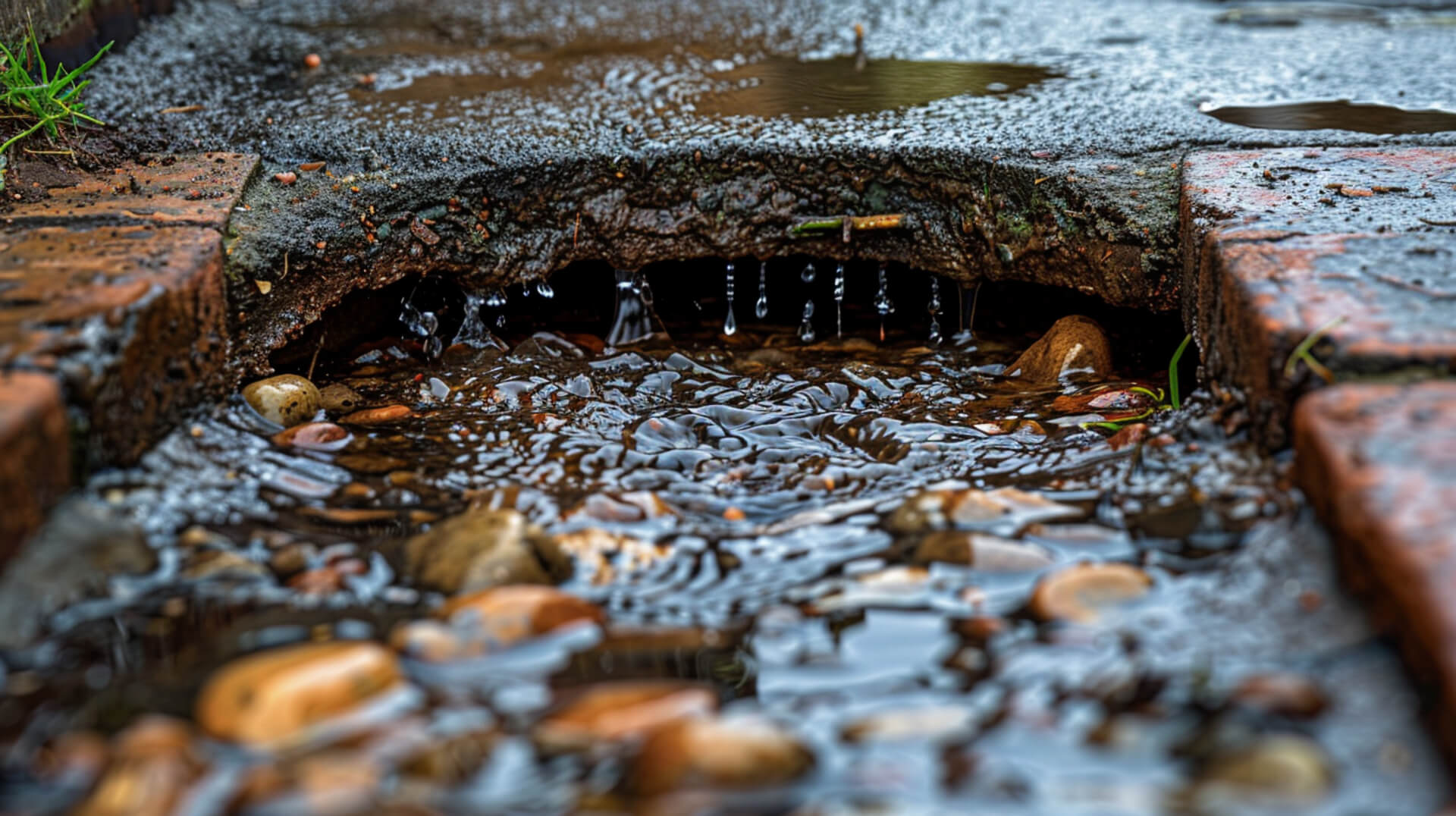
Urbanisation brings with it a unique set of challenges for water management, including increased surface runoff and pollution. Trench drains are a critical component in addressing these issues, providing a reliable solution for urban environments.
Mitigating Runoff and Pollution with Trench Drains
Trench drains are designed to manage surface water efficiently, reducing the volume and speed of runoff in urbanised areas. By capturing water before it accumulates, these systems help to prevent the overflow of city drainage networks and reduce the potential for pollutants to enter watercourses.
The Critical Role of Drainage in Urban Areas
In densely populated urban areas, the presence of impermeable surfaces such as concrete and asphalt exacerbates water management issues. Effective drainage systems like trench drains are essential to prevent water from pooling and causing damage to infrastructure and property.
Trench Drains in Sustainable Urban Development
Trench drains contribute to sustainable urban development by facilitating the management of stormwater in an environmentally friendly manner. They are often integrated into Sustainable Drainage Systems (SuDS) that aim to mimic natural water processes, thereby enhancing urban resilience to climate change and extreme weather events.
Examples of Successful Urban Drainage Implementations
Cities around the globe have recognised the benefits of trench drains in urban planning. Examples of successful implementations can be found in areas that have adopted SuDS, such as the innovative water management strategies seen in cities like Copenhagen and Portland, where trench drains play a vital role in their acclaimed urban drainage systems.
Selection Criteria for Different Types of Trench Drains
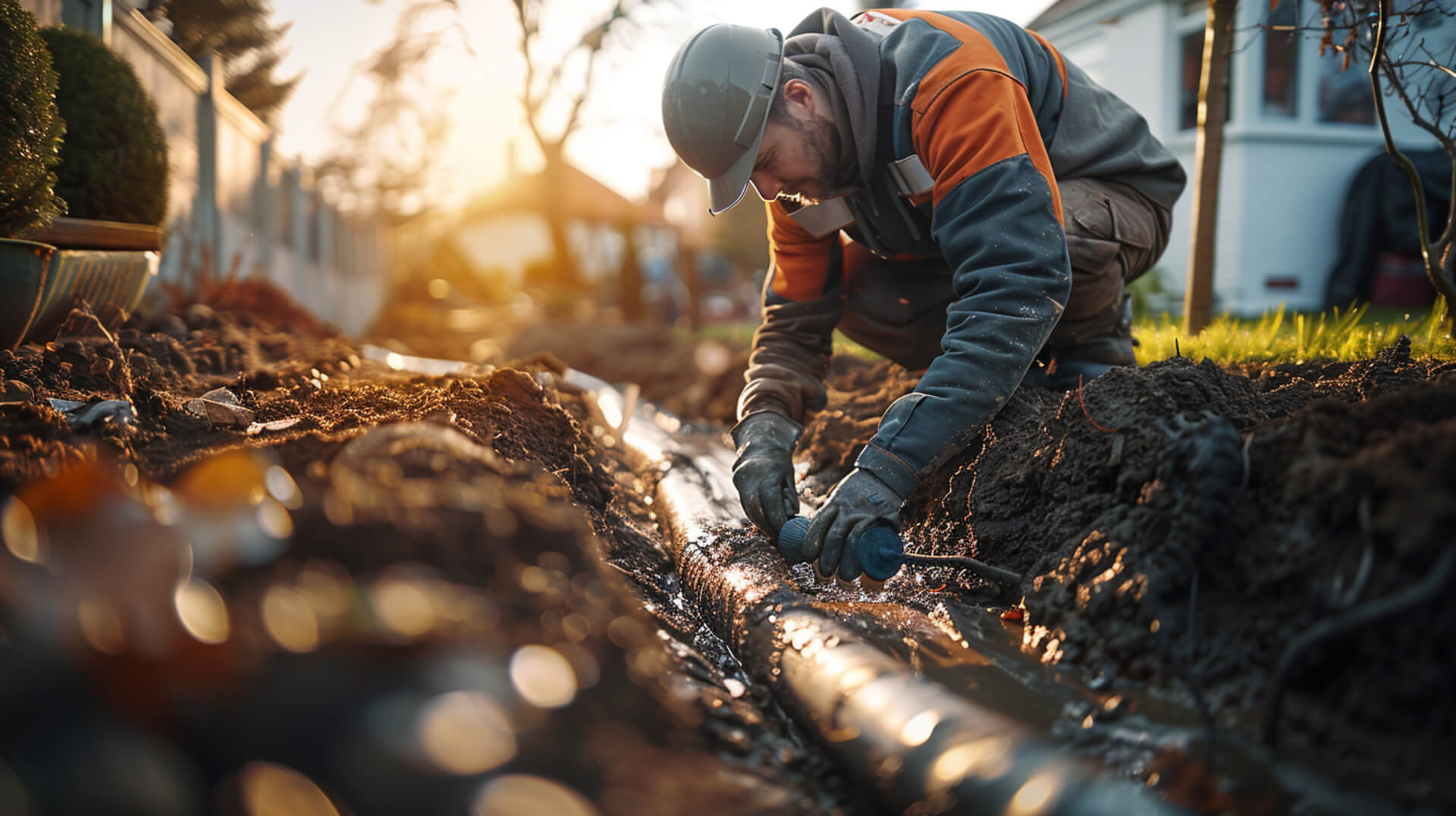
Selecting the right type of trench drain for your property involves considering several factors to ensure optimal functionality and compliance with regulations.
Factors Influencing Trench Drain Selection
When choosing a trench drain, it’s important to assess:
- Load-Bearing Capacity: The expected weight the drain must support, from pedestrian traffic to heavy vehicles.
- Water Flow Rate: The volume of water the system needs to handle, especially during peak rainfall.
- Regulatory Compliance: Local building codes and environmental regulations that may dictate specific requirements for drainage systems.
Matching Trench Drains to Property Needs
The effectiveness of a trench drain is contingent on its suitability for the property’s specific conditions:
- Precast vs. Custom vs. Cast-in-Place: Precast trench drains offer convenience and speed of installation, while custom and cast-in-place options provide tailored solutions for unique site conditions.
- Material Selection: The choice of materials, such as polymer concrete or fibreglass, should be based on durability, maintenance needs, and environmental factors.
Consulting Experts for Trench Drain Solutions
For guidance on the best trench drain solution, property owners can consult with:
- Civil Engineers: Professionals who can evaluate the site’s topography and water management needs.
- Drainage System Suppliers: Experts who can provide insights into the latest products and technologies in trench drainage.
- Local Authorities: To ensure that the chosen system meets all regulatory requirements and standards.
The Importance of Professional Installation and Compliance

Professional installation and adherence to regulations are paramount for the effective operation of trench drains.
Ensuring Effectiveness Through Expert Installation
Professional installation of trench drains is essential to ensure that the system functions as intended. Certified installers have the expertise to assess the specific needs of your property, from evaluating the topography to determining the optimal placement and slope for efficient water management. They ensure that the trench drain is installed with precision, which is critical for preventing water pooling and potential property damage.
Compliance with Regulations
Compliance with local building codes and environmental regulations is not only a legal requirement but also a guarantee of system reliability. Professionals are well-versed in these regulations and can ensure that your trench drain system meets all necessary standards, which can include considerations for water flow rates, materials, and impact on the surrounding ecosystem.
Risks of Non-Professional Installation
DIY or non-professional installation of trench drains can lead to several risks, including improper placement, inadequate slope, and non-compliance with regulations, all of which can result in system failure, property damage, or legal repercussions.
Finding Certified Installation Professionals
Property owners can find certified professionals for trench drain installation through industry associations, local contractor listings, or by consulting with manufacturers of trench drain systems. These professionals will have the credentials and experience necessary to instal your system correctly and ensure its long-term effectiveness.
Challenges and Solutions in Drain Trenching Services
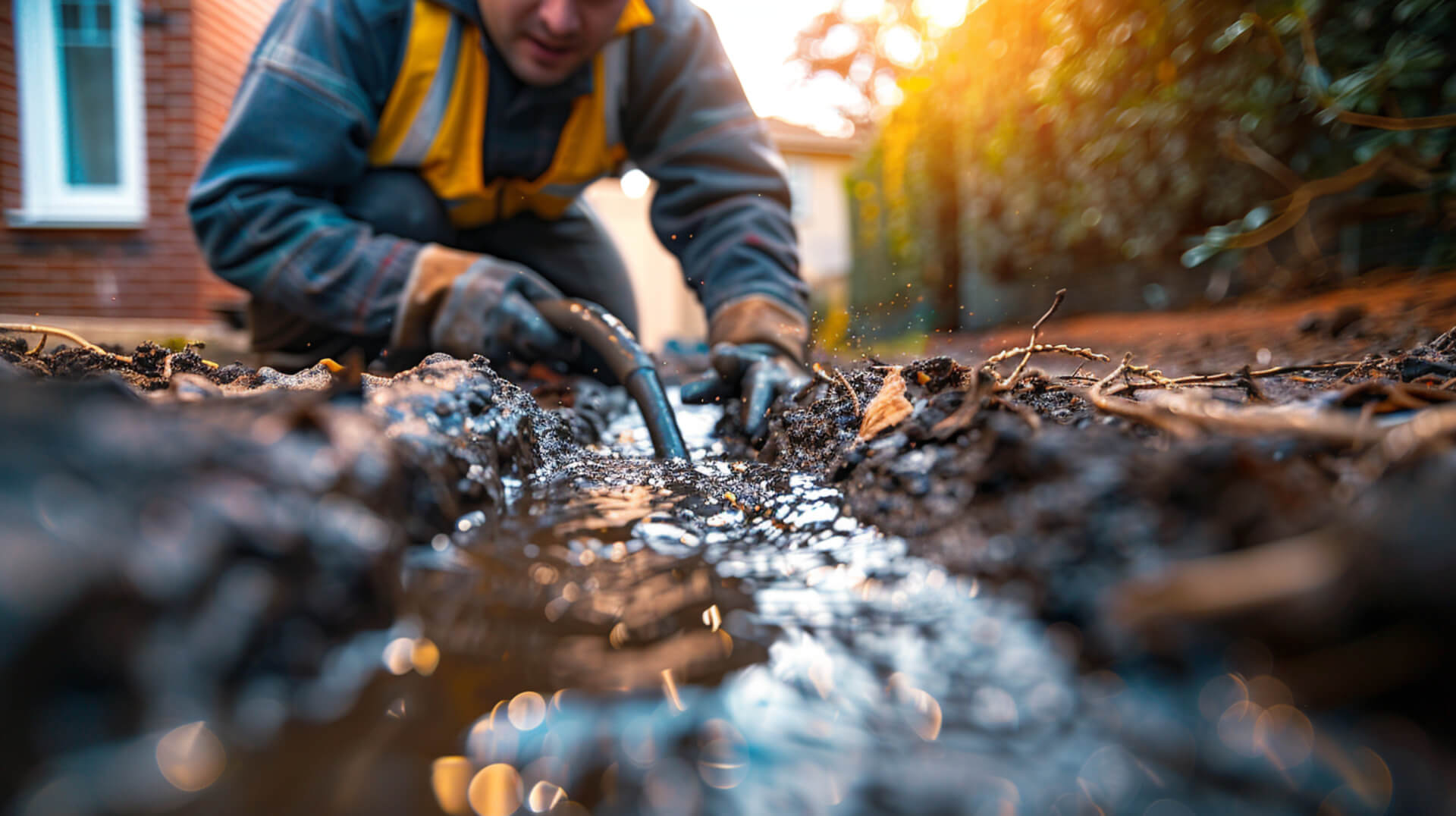
Implementing drain trenching services can present challenges, but with informed strategies, these can be effectively managed.
Common Challenges in Drain Trenching
Property owners may encounter various obstacles when considering trench drains:
- Site-Specific Constraints: Each property has unique topographical and architectural features that can complicate the installation process.
- Material Selection: Choosing the right materials for durability and compliance with environmental regulations requires careful consideration.
- Regulatory Compliance: Navigating building codes and ensuring that the installation meets local regulations can be daunting.
Effective Addressing of Trenching Challenges
To overcome these challenges, property owners should:
- Engage Professionals: Consulting with experienced engineers and certified installers can provide tailored solutions and ensure compliance.
- Research Materials: Understanding the properties of different materials and their suitability for specific environments is crucial.
- Stay Informed on Regulations: Keeping abreast of local regulations and environmental guidelines can prevent legal and functional issues.
The Role of Proactive Planning
Proactive planning is essential for the successful implementation of trench drains:
- Early Assessment: Evaluating the property’s needs early can identify potential issues before they become problematic.
- Future-Proofing: Considering future changes in property use or climate conditions can ensure the longevity of the drainage system.
Troubleshooting Resources
Resources for troubleshooting and further guidance include:
- Manufacturer Support: Many trench drain manufacturers offer technical support and documentation.
- Online Forums: Platforms where professionals share insights and advice on drainage solutions.
- Local Authorities: Government agencies can provide information on regulations and best practices.
Valuable Investment in Drain Trenching Services
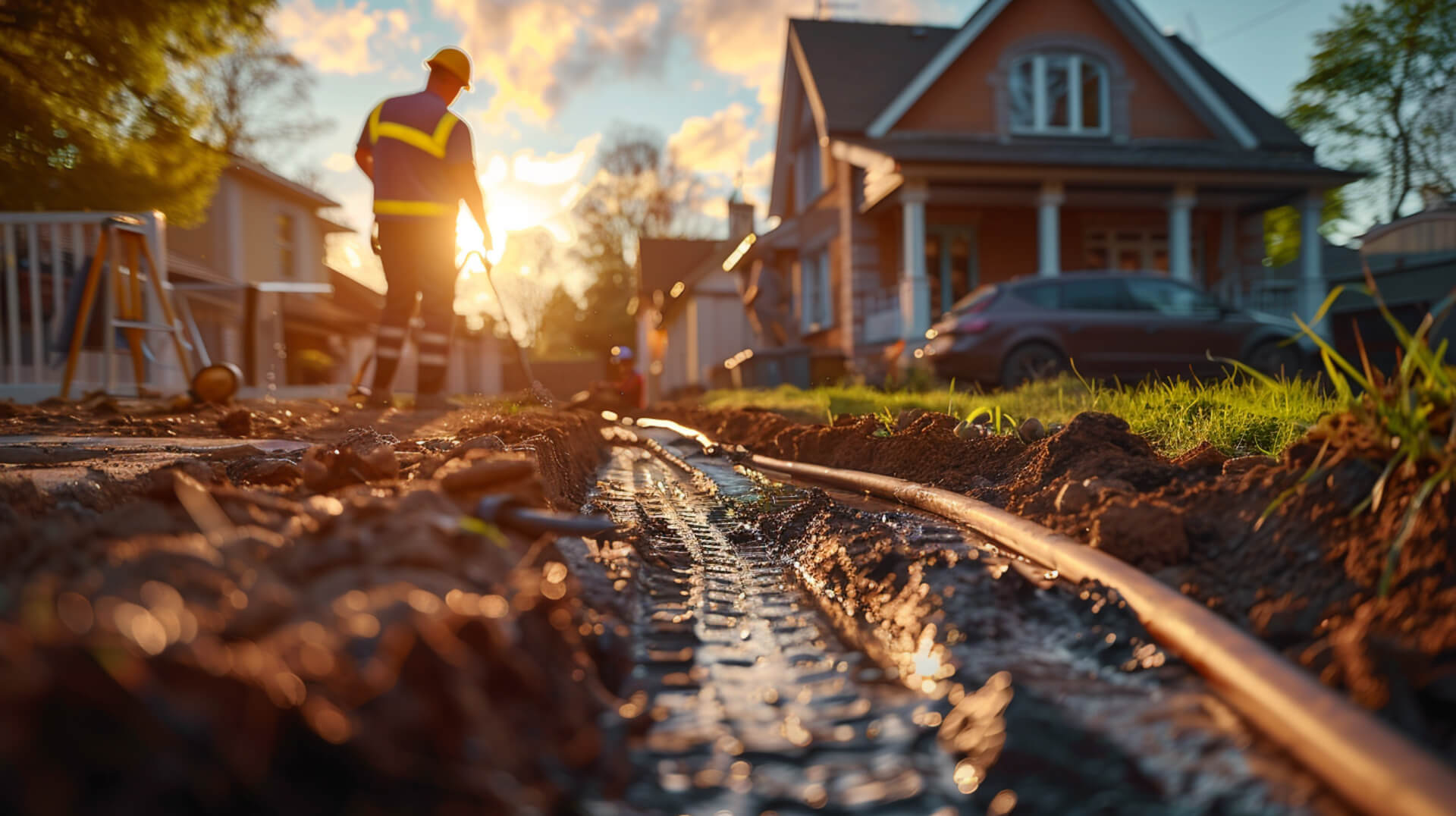
Drain trenching services are a strategic investment for property owners, offering both immediate and long-term benefits. By implementing these services, you ensure the protection of your property from water damage, which can be costly to repair.
Contribution to Property Health
Trench drains play a crucial role in maintaining the health of your property. They prevent water accumulation that can lead to structural damage, mould growth, and foundation issues. By managing water effectively, trench drains help in preserving the integrity and value of your property.
Long-Term Advantages of Effective Drainage
An effective drainage system, including trench drains, offers long-term benefits:
- Durability: Properly installed trench drains have a long lifespan, reducing the need for frequent repairs or replacements.
- Reduced Maintenance Costs: Regular maintenance is simpler and more cost-effective with trench drains, as they are designed for easy access and cleaning.
- Property Value: A well-maintained drainage system can enhance the value of your property, making it more attractive to potential buyers or tenants.
Starting with Drain Trenching Services
For property owners considering drain trenching services, the first step is to consult with a professional. They can assess your property’s specific needs, provide recommendations, and ensure that the installation complies with local regulations. Starting with a professional assessment will set the foundation for a successful and effective drainage solution.

